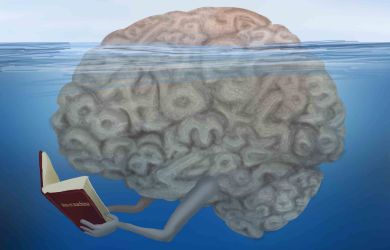They conducted experiments which they say constitutes a challenge to existing ideas of unconscious processes; namely that reading and solving math problems, complex, rule-based operations, require consciousness.
To present sentences and equations unconsciously, the researchers used Continuous Flash Suppression (CFS). In CFS, one eye is exposed to a series of rapidly changing images, while the other is simultaneously exposed to a constant image. The rapid changes in the one eye dominate consciousness, so that the image presented to the other eye is not experienced consciously. Using this technique, more than 270 students at the Hebrew University were exposed to sentences and arithmetic problems.
In one set of experiments using this technique, participants were asked to pronounce numbers that appeared on a computer’s screen. These numbers were preceded with unconscious arithmetic equations. The results of the experiments showed that participants could more quickly pronounce the conscious number if it had been the result of the unconscious equation. For example, when 9-5-1 was shown non-consciously, the participants were faster in pronouncing 3 than 4, even though they did not consciously see the equation.
In another set of experiments, participants were non-consciously exposed to a number of short verbal expressions that remained on screen until participants could say that they saw them. In the meantime, the other eye was exposed to the rapidly flashing images. The results showed that negative verbal expressions (e.g., human trafficking) or unusual phrases (e.g., the bench ate a zebra) became conscious to the viewers before more positive expressions (e.g., ironed shirt) and more usual phrases (e.g., the lion ate a zebra), indicating a definite ''pickup'' by the unconscious of something negative and out of the ordinary.

A metaphor for unconscious recognition. Art: Rinat Laor
“These results show that the humans can perform complex, rule-based operations unconsciously, contrary to existing models of consciousness and the unconscious,” say the researchers.
Says Dr. Ran Hassin, “Current theories of the unconscious processes and human consciousness need to be revised. These revisions would bring us closer to solving one of the biggest scientific mysteries of the 21st century: What are the functions of human consciousness.”
Published in PNAS (Proceedings of the National Academy of Sciences)






Comments